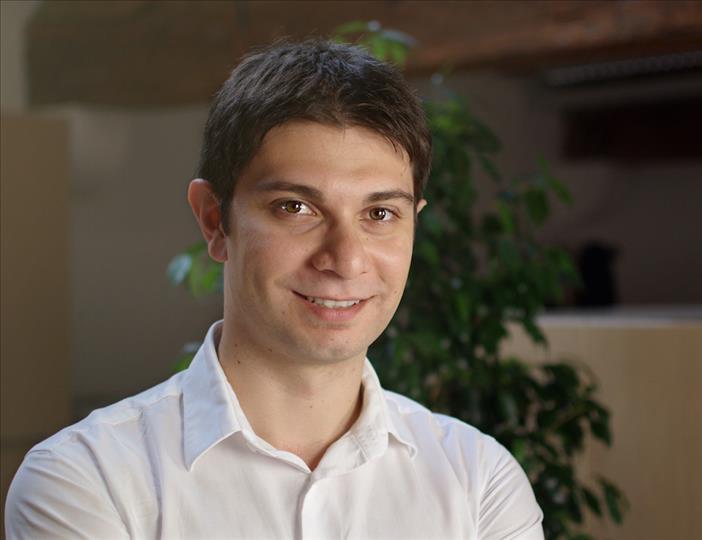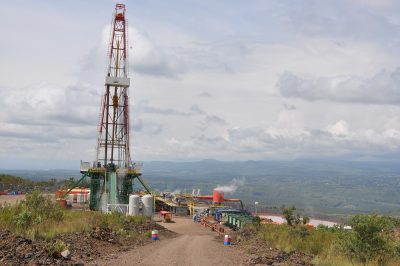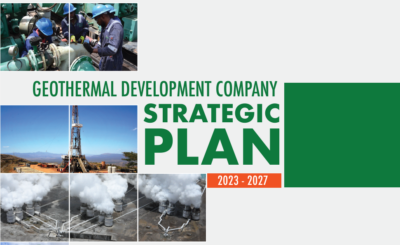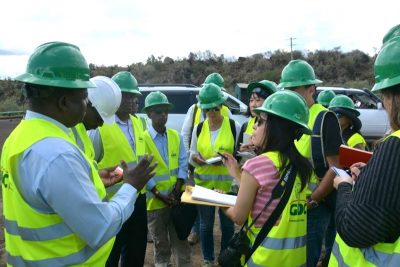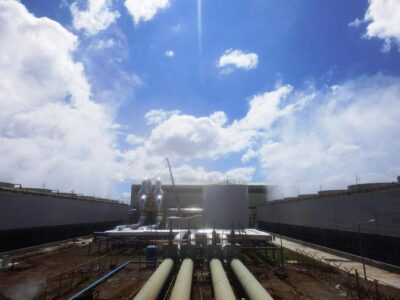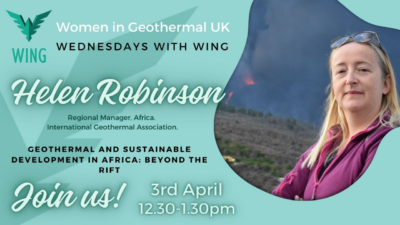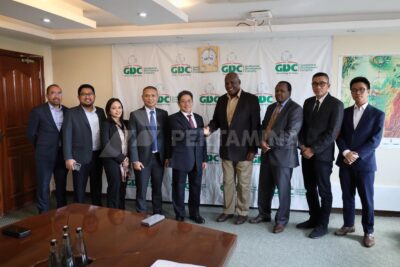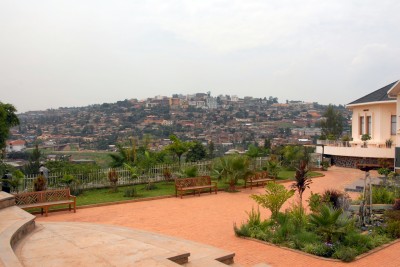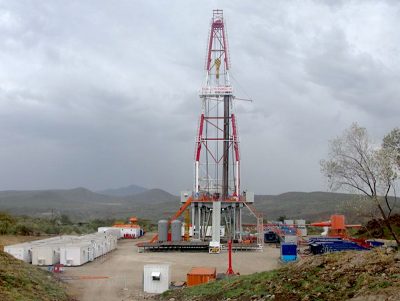Interview: Valerio Micale, Analyst at CPI on the Olkaria III geothermal project
CPI gives us an exclusive interview on their new report: "Using Public Finance to Attract Private Investment in Geothermal: Olkaria III Case Study, Kenya"
Geothermal energy is seeing impressive growth in East Africa, with Kenya leading the way. Geothermal power is a clean, renewable, baseload form of energy that has a critical role in the country. A prime example is the Olkaria III project, being the first privately funded and developed geothermal project in Africa. Climate Policy Initiative (CPI) has recently released a report about this titled: “Using Public Finance to Attract Private Investment in Geothermal: Olkaria III Case Study, Kenya”. We had the pleasure of interviewing Valerio Micale, Analyst at CPI and one of the authors of the report.
This is part of a series of reports CPI is carrying out for the Climate Investment Funds to look at the role of public finance in driving geothermal deployment in developing countries. ThinkGeoEnergy already talked to CPI about their analysis of the Gümüsköy geothermal project in Turkey. An upcoming case study will focus on the Sarulla plant in Indonesia before a lessons learned paper will draw together findings from across the case studies.
CPI has now released another report on financing of geothermal plants, now on a private project in Kenya. What has been the intention to look at this specific case in Africa?
We looked at the Olkaria III project because it is the first privately funded and developed geothermal project in Africa. Kenya is a country with growing energy demand and ambitious deployment targets for geothermal, the lowest cost source or reliable electricity in the country. However, deployment under the public finance and development models used in the country until recent years has been below the pace needed to achieve national targets. We wanted to understand how the Olkaria III project had worked and to see what lessons could be learned for further scale up of geothermal. This study is part of a series for the Climate Investment Funds (CIF) looking at how domestic and international public finance can help to accelerate geothermal deployment at low-cost in developing countries by encouraging greater private investment.
The Olkaria III plant is so far the only private-market geothermal plant in Africa, how could it be exemplary for other similar projects?
Olkaria III is the first step in the direction of a greater involvement of the private sector in the development of geothermal power in Kenya. Our analysis shows that the project’s levelized cost of electricity was 13% lower than the average for geothermal plants in the country. Public financial support was key. It reduced the levelized cost of electricity by almost one third and provided high enough returns for the private developer to develop the project and secure financing. Public sector was also important in addressing key risks for the private sector, carrying on the initial exploration of the site and providing guarantees backing the PPA agreement. Basically, the project demonstrates that private financing and development, combined with targeted public support, can be an attractive option for the government to accelerate deployment and reduce costs in line with its policy objectives.
Current development in Kenya is actually driven by government-owned entities, Kenya Electricity Generating Company (KenGen) and the Geothermal Development Company (GDC). What role could private players play in accompanying these companies’ efforts?
This depends on the public frameworks in place. Certainly, new models for geothermal development are emerging in Kenya and private involvement is likely to increase. Historically, KenGen carried out all exploration and development of geothermal projects. This changed with Olkaria III which pioneered greater private involvement. However, even this project benefitted from the early exploration carried out by KenGen. Without KenGen’s previous exploration work on the site, which increased the data available on resource availability, and donation of wells with an 8 MW capacity used for piloting the project, expected returns for the project would have dropped to levels insufficient for the private developer to make the necessary equity investment without a significant increase in the PPA tariff.
Under the ‘GDC model,’ this government-owned entity will conduct surface studies, exploration drilling, feasibility studies and production drilling, and then sell the steam through competitive tendering to public or private power producers while guaranteeing the steam supply over the plant life. The advantage of this model compared to Olkaria III is that GDC’s steam supply obligations help to reduce project risk, the overall financing cost of the investment, and facilitate financial closure. However, because GDC wants to sell the steam to power generating companies through competitive tendering, project developers may demand a higher tariff to compensate for the cost of buying the steam from GDC, or look for cost savings elsewhere.
More recently, GDC started exploring a “hybrid” solution, the so-called Joint Development Agreement model. The responsibilities of this agreement are yet to be defined, but GDC is hoping that independent power producers will contribute 60-80% of the investment in the drilling of production wells and the development of the steam field, and then 100% in the construction and operation phase.
In the report, you provide lessons for the different actors that could help drive development. How crucial is the functioning electricity market and in particular the role of the power purchaser? In particular, how important are functioning PPA arrangements and guarantees for development?
Kenya’s energy policy sometimes requires the off-taker KPLC to provide power to consumers at a lower cost than the off-taker pays for power. This resulted in Ormat being initially unable to attract debt financing either from private actors or development finance institutions. The decision of the Government of Kenya to provide a guarantee covering payments due to the project developer by the public off-taker helped secure financing in 2009 that enabled Ormat to develop the later phases of the project.
The structure of the PPA was also key. It lasts 20 years provides investors and debt providers with certainty on project revenues and enabling them to offer longer-term finance suitable to the long lifetime of a geothermal project. In Olkaria III the PPA also addresses three further risks for the developer. It reduces currency risk by pegging tariff payments to the US dollar, addresses potential escalation in operational by adjusting the tariff to the US Consumer Price Index, and partially shields the developer from resource risk by introducing a relief formula that ensures capacity payments to the developer in case of unexpected degradation of the resource.
How could development banks they play a stronger role in pushing for private-public partnership efforts, as e.g. planned for the Menengai geothermal field in Kenya?
They are already doing so. Private developers at the Akiira and Longonot fields are counting on grant funding from the Geothermal Risk Mitigation Facility (GRMF) to begin exploration drilling. The African Union, EU, the German government, and German Development Bank are funding geothermal development in Ethiopia, Kenya, Rwanda, Tanzania, and Uganda. Akiira also received grant funding from OPIC Africa Clean Energy Finance program to support project preparation activities. Some projects are also expected to pilot drilling insurance from Munich Re. Targeting development finance at the early stage of geothermal development is very interesting. Until now,for instance, 90% of multilateral development finance at the global level has focused on the later stages of geothermal projects where the resource risks have been reduced.
In the report you also mention the importance of risk mitigation. Kenya chose to establish a government-owned entity to take over the drilling risk and then have plants developed by private sector players. How is this system working so far and is this a model that could work for other countries as well? Or what are some lessons learned from Kenya in that regard for other countries in the region?
It is too early to say exactly how well the emerging models in Kenya are working, although models like GDC model are already being currently replicated in other countries, such as Tanzania. There are some lessons for Kenya and other countries in the region that we can learn from Olkaria III. Firstly, that private involvement in geothermal development and construction can accelerate deployment and reduce the cost of electricity. Secondly, that government financing of resource exploration and appraisal phase plays an important role in attracting private investors. Thirdly, that a country’s attractiveness to private investors and, in particular, lenders does not only depend on proven resource availability, it also requires a combination of in-country skills, data availability, regulatory frameworks and a creditworthy off-taker.
About Climate Policy Initiative (CPI)
Climate Policy Initiative (CPI) works to improve the most important energy and land use policies around the world, with a particular focus on finance. It supports decision makers through in-depth analysis on what works and what does not, working in places that provide the most potential for policy impact, including Brazil, China, Europe, India, Indonesia, and the United States.
Its work helps nations grow while addressing increasingly scarce resources and climate risk. This is a complex challenge in which policy plays a crucial role.
To access the full report, please use this LINK
To read the previous report by CPI, please follow this link: “Public Finance and Private Exploration in Geothermal: Gümüsköy Case Study, Turkey”
